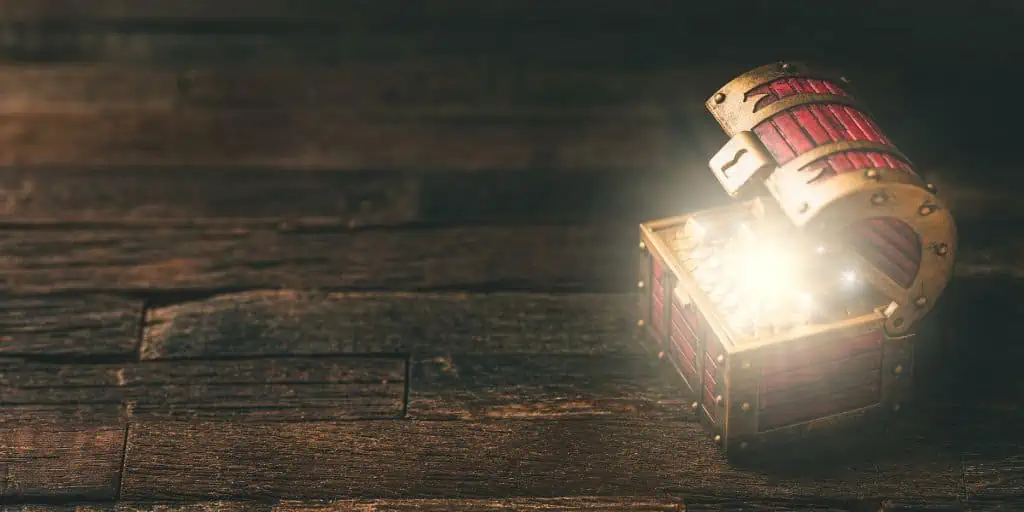What Are Non-Productive Assets?
REtipster does not provide tax, investment, or financial advice. Always seek the help of a licensed financial professional before taking action.
Shortcuts
- Non-productive assets are assets that don’t consistently or necessarily produce immediate income, often held for personal or sentimental reasons.
- Examples include collectible art, personal cars, and vacation homes.
- In real estate, non-productive assets can be vacation homes, historic properties, or undeveloped land with unique intrinsic value or long-term benefits.
- Investors diversify portfolios with non-productive assets for appreciation potential, market hedging, personal satisfaction, and low correlation with conventional financial markets.
Understanding Non-Productive Assets
Non-productive assets are tangible or intangible items that do not directly produce income (hence the name). They may also describe assets that do not necessarily or consistently appreciate over time. These assets are often held for personal use, aesthetic or sentimental value, or potential future uses[1].
Examples include collectible art, personal cars, and heirloom jewelry. In real estate, a non-productive asset might be a vacant lot in a remote area instead of a rented apartment building in a city.
These assets typically have low liquidity and are often held for reasons other than immediate income. However, certain non-productive assets can appreciate over a long time. For instance, while a vintage car might not earn rental income like a property, it might appreciate due to its rarity. A painting by a renowned artist might not generate royalties, but its value might skyrocket over decades.
Historically, cultures worldwide have cherished non-productive assets. During the Renaissance, for example, the Medici family commissioned art masters to portray their persona in a more favorable light[2]. In more modern times, collectible items, from stamps to rare action figures, have become valuable, not necessarily for their income-generating potential, but for their historical or emotional significance.

Statue of Cosimo I de Medici, Florence, Italy
Understanding and appreciating non-productive assets is essential, especially when considering their place in an individual’s wealth portfolio.
Non-Productive vs. Productive Assets
Productive assets are the opposite; they actively generate income. Rental properties, dividend-yielding stocks, and businesses are classic examples.
While a productive asset like a commercial building in Manhattan might generate monthly rental income, a non-productive asset like a plot of land in a less-developed region might yield little returns but holds potential for future appreciation due to increased demand[3].
For investors, distinguishing between the two helps in crafting a balanced portfolio.
Non-Productive Assets in Real Estate
Real estate, while often associated with regular income and appreciation, also has its share of non-productive assets. These properties may not always churn out regular income but hold unique intrinsic value and other long-term benefits.
Here are some examples of non-productive real estate assets:
Vacation Homes
Consider that cabin in the mountains or that beachfront villa. They might stay vacant most of the year, yet their value often rises due to their location or appeal.
For example, data shows that 40% of Americans own a vacation home, with almost three-quarters of the remaining 60% indicating interest in acquiring one[4]. This shows the growing allure of these properties that might otherwise stay vacant and thus produce no consistent income.
Historical Properties
Owning a piece of history, like a centuries-old mansion or a culturally significant property, brings a sense of pride. These assets may not always yield high rental income due to their upkeep needs, but they can appreciate significantly, especially if they’re restored or maintained well.

The city of Norwalk, CT is famous for its 19th-century buildings.
In addition, the restoration of historic buildings and districts may also attract new investments to develop the area for tourism, improving the local economy[5].
Undeveloped Land
While undeveloped or raw land doesn’t generate immediate returns like commercial real estate or rental apartments, the potential for future development can significantly increase its value. For instance, as urban boundaries expand, today’s remote land could be tomorrow’s prime real estate.
The impact of these non-productive assets in real estate is twofold. Firstly, they diversify and provide depth to an investor’s portfolio. Secondly, they act as a safeguard, often retaining or increasing their value irrespective of broader economic conditions.
Non-Productive Assets in Personal Collections
Many non-productive assets are part of personal collections, adding depth and diversity to an individual’s wealth portfolio.
Some key types include:
Art Collections
These range from paintings to sculptures, valued for their aesthetic appeal and their artist’s significance. Art offers a visual pleasure and a potential increase in value if the artist’s reputation grows or if the piece becomes historically significant. Some platforms like Masterworks even allow partial ownership of these pieces of art, much like you would own shares of a blue chip stock[6].
Antique Collectibles
These items offer a glimpse into the past, from age-old furniture pieces to vintage cars. Their value can increase as they become rarer over time due to their unique and irreplaceable nature.
For example, a 1912 “Brass Era” Simplex Torpedo Tourer sold for $4.8 million at a Scottsdale, AZ auction[7], the most expensive vintage car ever sold.
Jewelry and Gemstones
While certain gemstones might be considered investments, jewelry, especially those tied to memories or passed down generations, usually fits the non-productive category. They might not offer annual returns but can provide immense personal value and potential appreciation.
Rare Items and Memorabilia
This category can include items like rare comic books, stamps, or sports memorabilia. Their value is determined by their rarity, historical significance, and the demand within collector communities. An example is the ultra-rare Pokémon card of Pikachu that YouTube star Logan Paul paid $5,275,000 for[8].

Who knew this adorable yellow rodent could be so expensive?
Why Would You Invest in Non-Productive Assets?
Investors may sometimes invest in non-productive assets to diversify their portfolios. Doing so brings some advantages, such as:
- Appreciation potential: Assets like collectible art or vintage cars may not offer regular income, but their value can rise. For instance, the art market has an average appreciation of 5.3%, outpacing some traditional investments (including bonds)[9].
- Market hedge: Their value often correlates less with stock market ups and downs. This makes them a stabilizing factor in turbulent times.
- Personal satisfaction: Beyond financial metrics, there’s joy in owning a piece of history or a work of art. Such assets can enrich an investor’s life experience.
- Low correlation: Assets like heirloom jewelry or rare stamps don’t align with conventional financial markets. This means even if stocks plummet, your rare coin collection might retain or appreciate. Asset classes like these are great for diversifying a portfolio[10].
Incorporating non-productive assets offers a blend of tangible and intangible returns, ensuring a well-rounded investment approach.
Frequently Asked Questions: Non-Productive Assets
What makes non-productive assets valuable if they don’t generate income?
Non-productive assets can hold value due to their rarity, historical significance, aesthetic appeal, or personal emotional ties. Their worth isn’t tied to regular income generation but their unique attributes or potential future appreciation.
How can non-productive assets fit into an overall investment strategy?
They offer diversification, protection against market volatility, potential appreciation, and personal satisfaction. While not core investments, they can complement a portfolio, balancing emotional and financial wealth.
Can non-productive assets ever become productive?
Potentially, yes.
For instance, land initially held for personal use can be developed or rented out in the future. A piece of art primarily purchased for aesthetic enjoyment can later be loaned to galleries for a fee or sold at a profit.
Sources
- Jooris, D. (2022, March 29.) The Relevance Of Non-Productive Assets To Wealth Management. LinkedIn. Retrieved from https://www.linkedin.com/pulse/relevance-non-productive-assets-wealth-management-dominique-jooris/
- The Medici and the Arts – Politics, Patronage and Power. (2021, September 29.) WideWalls. Retrieved from https://www.widewalls.ch/magazine/medici-arts
- Brumer-Smith, L. (2022, January 31.) Is Land a Smart Buy in 2022? The Motley Fool Retrieved from https://www.fool.com/real-estate/2022/01/31/is-land-a-smart-buy-in-2022/
- Lisa, A. (2023, June 16.) 40% of People Have Vacation Homes: Where You Can Find One for Your Budget. Yahoo! Finance. Retrieved from https://finance.yahoo.com/news/40-people-vacation-homes-where-110014188.html?
- The Importance of Preserving and Promoting Historic Buildings. (2019, August 30.) Norwalk Tomorrow. Retrieved from https://tomorrow.norwalkct.org/news/importance-preserving-promoting-historic-buildings/
- A complete platform for investing in art. (n.d.) Masterworks. Retrieved from https://www.masterworks.com/about/how-it-works
- Hurlin, T. (2023, January 31.) A 1912 Simplex Torpedo Tourer Sells for $4.8 Million at Bonhams Scottsdale. Hemmings. Retrieved from https://www.hemmings.com/stories/bonhams-scottsdale-sales-2023/
- Most expensive Pokemon trading card sold at a private sale. (2021, July 22.) Guinness World Records. Retrieved from https://www.guinnessworldrecords.com/world-records/695893-most-expensive-pokemon-trading-card-sold-at-a-private-sale
- Stevens, P. (2019, December 7.) Buy a Monet instead of a Treasury? Art has shown long-term returns that rival bonds. CNBC. Retrieved from https://www.cnbc.com/2019/12/07/art-has-shown-long-term-returns-that-rival-bonds.html
- Asset Class Correlation Map. (n.d.) Guggenheim Investments. Retrieved from https://www.guggenheiminvestments.com/advisor-resources/interactive-tools/asset-class-correlation-map









